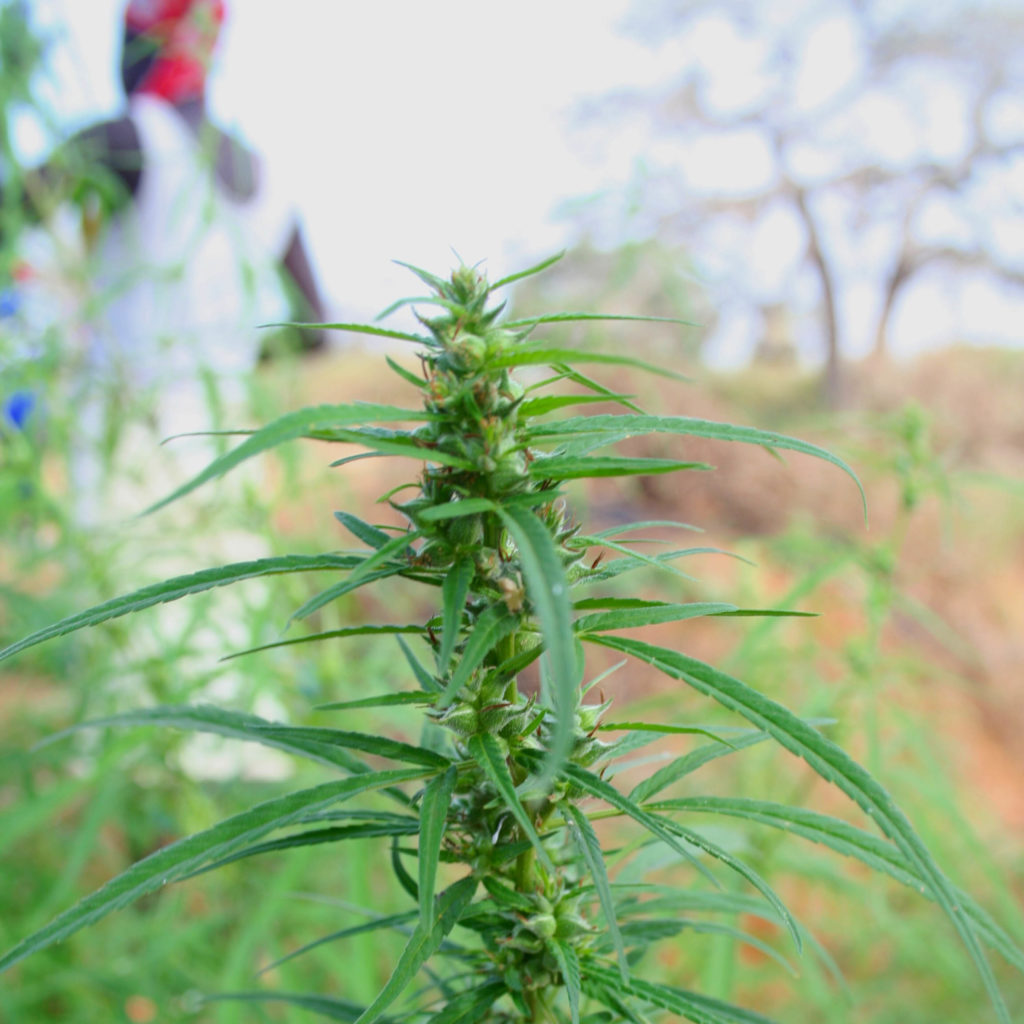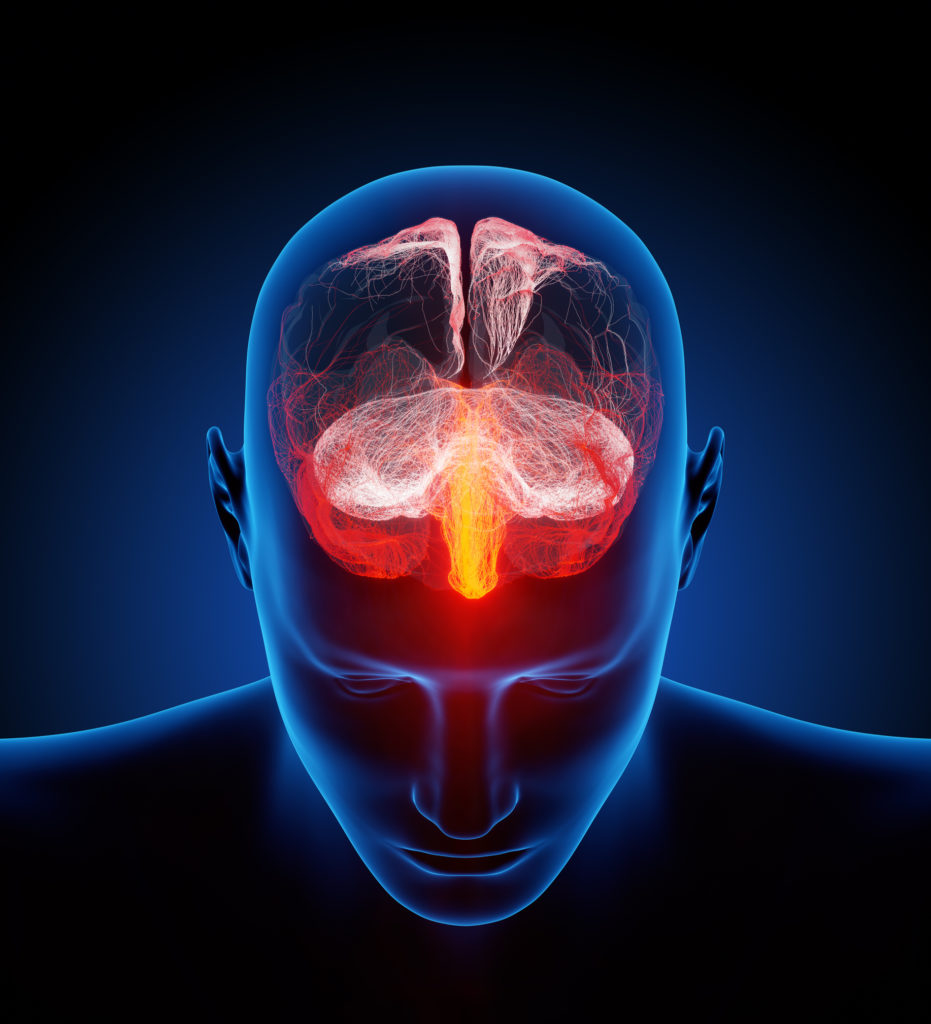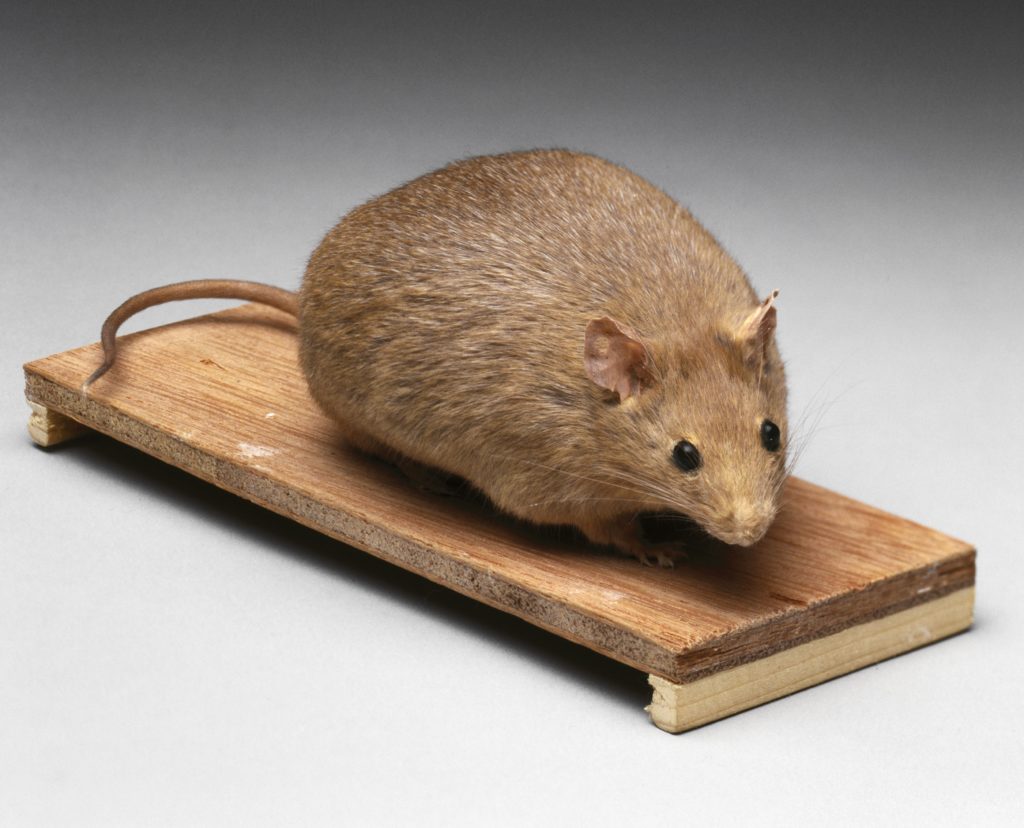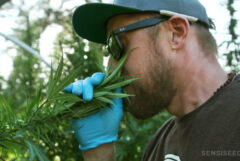Tetrahydrocannabivarin (THCV) is one of the most medically important of the known cannabinoids. It is thought to act as an antagonist of the cannabinoid receptors at low doses, but surprisingly, it may act as an agonist at high doses, giving effects similar to THC.
Since its discovery in 1973, THCV has gradually grown in importance within medical circles, and over the last decade, research into its pharmacological properties has intensified. Like CBD, it is thought to have important roles to play in the regulation of the immune system, particularly with regards to inflammation and inflammatory pain. THCV often has effects that counter those of THC, although in high doses, it might behave much like THC.
Chemical structure & properties of THCV
THCV is a molecule with the chemical formula C19H26O2, containing nineteen atoms of carbon, twenty-six of hydrogen and two of oxygen. As with all other known phytocannabinoids, THCV is an oily compound that is insoluble in water but highly soluble in lipid-based solvents.
THCV is structurally very similar to THC. Its atoms are arranged almost identically, creating a similar 3D structure to the molecule. However, THC has a side-chain composed of a pentyl group (-C5H11), whereas THCV has a side-chain composed of a propyl group (-CH2CH2CH3). Just like THC, THCV has various isomers; the more common isomer is Δ9-THCV, while Δ8-THCV is somewhat rarer.
THCV is not the only cannabinoid that has a propyl group instead of a pentyl group. Other propyl cannabinoids corresponding to major pentyl cannabinoids are known to exist, such as cannabidivarin (CBDV; homologous to CBD) and cannabivarin (CBV; homologous to CBN). All these propyl cannabinoids have the suffix “varin”.
How is THCV produced by the cannabis plant?
Many cannabinoids, including THC and CBD, are produced via the precursor, cannabigerolic acid (CBGA). Cannabigerolic acid is formed as a result of the reaction between the two compounds, olivetolic acid and geranyl pyrophosphate.
However, THCV is formed via a slightly different biosynthesis pathway. Instead of reacting with olivetolic acid, geranyl pyrophosphate reacts with divarinolic acid, a molecule that is very similar but has two carbon atoms fewer.
This reaction leads to the formation of cannabigerovarinic acid (CBGVA), which then reacts with an enzyme called THCV synthase (all cannabinoids have a corresponding synthase enzyme which catalyzes their biosynthesis) to form tetrahydrocannabivarin carboxylic acid (THCVA). THCVA is then broken down into THCV via the exact same decarboxylation process that THCA undergoes to produce THC.
A study published in the American Journal of Botany in 2004 tested landrace populations from across the world to determine their cannabinoid content and ratios. THCV was found to be present in all varieties, with higher concentrations in feral C. indica populations originating in Central/Southeast Asia and Southern Africa.

In another study conducted in 1973 by pharmaceutical company Syntex, one South African strain was found to have THCV levels of a staggering 53.7%, while an Afghani variant is found to contain 48.2%.
Commercial indoor varieties rarely have THCV levels this high. However, a handful of strains have now been developed with the aim of maximising THCV levels, such as Doug’s Varin. This mysterious strain (of which the seeds are apparently not yet available) was created and tested by Steep Hill Labs, and was found to contain 21.1% THC and 24.3% THCV in the decarboxylated sample.
How THCV affects the endocannabinoid system
THCV, along with several other cannabinoids, binds to special receptor sites in the body that are located in the brain, within the major organs, and throughout the cells of the immune system. These receptors are specialised proteins situated at the presynaptic junctions between neurons (nerve cells). So far, two major cannabinoid receptors have been identified – cannabinoid receptors type I & II, or CB1 and CB2.

THCV is capable of binding to both the CB1 and CB2-receptors. Interestingly, it also seems that THCV exerts either an agonising or antagonising effect on the CB1-receptor, depending on dose. In small doses, THCV appears to antagonise (block) the CB1-receptor, while in higher doses it actually appears to have an agonising effect similar to THC!
Thus, there is a strong argument for considering THCV to be another psychoactive compound, although modern science doesn’t actually know if it is psychoactive or not. This is because it sometimes binds to the CB1 receptor, which is the mechanism by which THC has a psychoactive effect. However, it’s unclear whether THCV actually has psychoactive effects. According to Steep Hill Labs, THCV has a more energetic and active effect than THC, and also appears to counteract the “couch-lock” effect of the monoterpene myrcene.
Medical applications of THCV
Perhaps the most exciting avenue of study with respect to THCV is in its potential to treat obesity-related glucose intolerance and insulin resistance in diabetics. In this 2013 study, researchers administered THCV to obese mouse models with insulin resistance and glucose intolerance. While the mice themselves didn’t slim down, their glucose tolerance was significantly improved, as was their insulin sensitivity. Although it obviously warrants further research in humans, this could also assist obese diabetics in losing weight.

Just like CBDV, THCV is also celebrated for reducing seizure activity, a common effect of most cannabinoids. Until now, the exact mechanism by which THCV reduces seizures is unknown, but it is hypothesized that this quality is mediated by CB1 interaction. In a 2010 study published in Epilepsia, researchers suggested THCV as a possible therapeutic application in the treatment of seizures, especially those characterised by hyperexcitability states.
Outside of these two specialized effects, THCV has many of the same tell-tale effects of many other cannabinoids. It is an antioxidant, giving this cannabinoid the same neuroprotective properties as CBD. It also has anti-inflammatory and analgesic effects, particularly in circumstances of inflammatory pain such as rheumatoid arthritis.
GW Pharmaceuticals and their investigation of THCV
GW Pharmaceuticals commenced an investigation into the effects of THCV on humans and its potential to treat obesity and other related metabolic disorders. GW Pharmaceuticals has been highly motivated by cannabinoid research in the past, and were the first pharmaceutical company to manufacture a cannabis-derived pharmaceutical product. That product was Sativex (a THC-based product), and since then, GW has also released Epidiolex (a CBD-based product).
GW Pharmaceuticals has also patented a preparation of THCV with optional CBD for the treatment of epilepsy and the treatment of generalized seizures. Their objective is to amplify the anticonvulsant effects of CBD by adding THCV to the preparation.
In many ways, THCV is very similar to THC. However, its medical application may be of more interest to some because it may not have psychoactive effects, or at least may not have as strong a psychoactive effect as THC. This may make the therapeutic qualities of THC available to those who prefer non-psychoactive intervention.
- Disclaimer:This article is not a substitute for professional medical advice, diagnosis, or treatment. Always consult with your doctor or other licensed medical professional. Do not delay seeking medical advice or disregard medical advice due to something you have read on this website.











A handful of strains have now been developed with the aim of maximizing THCV levels. A study published in the American Journal of Botany in 2004 tested landrace populations from across the world to determine their cannabis content and ratios. THCV was found to be present in all varieties, with higher concentrations in feral C. Indica populations originating in central/southeast Asia and southern Africa.